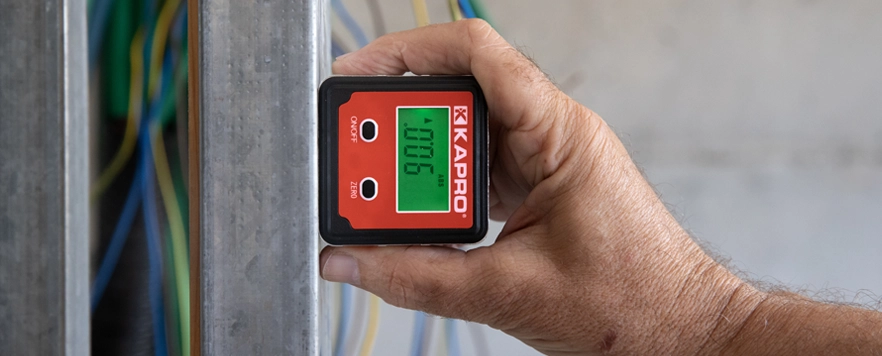How Do Digital Levels Work? A Guide to Precision in the Modern Age
From Spirit to Digital
“How does a digital level work compared to the classic spirit level?” It’s a question that marks a key shift in how we measure, build, and align. The traditional spirit level, reliable, simple, and widely used for centuries, laid the foundation for precision in construction and design. But digital levels have taken that same concept and combined it with modern technology for faster, more accurate, and more versatile measurement.

The Core Principles: How Do Digital Levels Work?
At their heart, digital levels are built on a simple yet powerful concept: tilt detection through sensors. Inside each unit lies an inclinometer, a sensor that measures small changes in angle or slope. As the level tilts, these sensors detect variations relative to the horizontal plane.
A built-in microprocessor then takes over, calculating and interpreting this data in real time. The results appear instantly on an LCD or LED screen, typically displayed in degrees, percentages, or pitch (e.g., 1:12).
In other words, when you place a digital level on a surface, the sensors measure how far that surface deviates from perfectly level or ‘plumb’, and the screen tells you exactly by how much. The technology removes the guesswork, allowing for quick and repeatable accuracy, even in complex setups
Accuracy and Calibration in Digital Levels
Calibration is what separates a dependable digital level from an unreliable one. It ensures that the readings you get reflect the true angle of the surface.
Digital levels often include automatic calibration functions, allowing the device to self-adjust using internal algorithms. Others require manual calibration, which usually involves placing the level on a reference surface, flipping it, and resetting the measurement.
Compared to traditional spirit levels, which rely on visual bubble alignment, digital levels offer quantitative precision – accurate to fractions of a degree. That means less subjectivity and more confidence, especially on jobs where even minor deviations matter.
Features That Make Digital Levels Unique
Modern digital levels offer electronic features that analog versions do not, enhancing usability and efficiency. These features include:
- Audible indicators – A beep or tone signals when you’ve reached level or plumb, perfect for hands-free alignment.
- Hold and memory functions – Save angle readings to compare or record later.
- Dual unit display – Instantly switch between degrees and percent grade.
- Backlit screens – Ideal for working in dimly lit environments or outdoors at dusk.
These features collectively make digital levels indispensable for professionals and DIYers alike.

Everyday Applications for Professionals and Hobbyists
Digital levels have found their place across numerous fields:
- Construction and infrastructure – Ensuring proper slope for drainage, grading, and structural alignment.
- Woodworking – Setting saw blade angles and joining edges with precision.
- Home projects – Hanging cabinets, shelves, and tiles with confidence.
- Outdoor builds – Leveling decks, ramps, and garden structures.
- Niche applications – Photography setups, robotics, and small-scale engineering benefit from the same precision principles.
No matter the scale, digital levels bring accuracy, repeatability, and speed to the task.
Kapro’s Place in the Story
As one of the innovators in leveling technology, Kapro bridges the gap between professional-grade instruments and tools designed for everyday use. From its spirit levels to advanced digital levels, the company has helped shape how measurement tools evolve with modern demands.
Kapro’s digital levels embody the fusion of precision, durability, and intelligent design. Reach out to explore the full line of measuring tools by Kapro.

